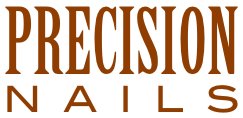While writing this article on my laptop, I’m willing to acknowledge that technology makes it possible. If I had to hand write, it just wouldn’t happen. I have neither the patience or time necessary to draft and edit using only pen and paper. And my handwriting isn’t all that legible anyways; there are times when even I cannot read my own notes. My typing skills aren’t much better than my hand writing, but at least I can read what I’ve typed.
The work of a licensed manicurist does not require any particular technology skills, but those skills are very relevant to the work of a salon owner. My responsibilities would be overwhelming if it weren’t for technology. There’s so much to do that I can rationalize my dependence on technology as productive rather than addictive. I manage my business using a smartphone, a laptop and desktop computers, printer/fax machine, internet access and numerous applications. All this technology gives me the control and functionality I need to:
- Track finances
- Pay bills
- Report taxes
- Communicate through email, texting, and phone calls
- Design marketing materials
- Plan travel to shows and other industry events
- Promote our salon and services
- Research new products, techniques and sources
- Order supplies
- Network with other businesses
- Write content for articles, blog, etc.
- Maintain a website
- Develop and deliver presentations
- Keep client and employee records
- Schedule clients
- Control inventory
- Sell products online
- Process credit card transactions
- Donate to charitable organizations
- Analyze performance reports
It’s not an exaggeration to say that salon management software transformed my business. Clients recognized that their money was being reinvested to improve their salon experience. The efficiency of the scheduling process was the most obvious improvement. No more counting every four pages to schedule a monthly standing, or hand-writing appointment cards. The software does just about everything (email appointment reminders, online scheduling, integrated credit card processing, gift card tracking, automatic remote data storage, etc.) except self check-out. Years later, as my business grows and the software evolves, I appreciate the technology even more.
Not every investment in technology has been worthwhile. When I designed my current salon, I had satellite radio receivers installed at each station so clients could listen privately wearing headphones. Music played throughout the salon on an additional receiver. What a waste of money! Clients wanted to interact us, not isolate themselves. So I ditched the service as soon as my contract expired and have been much more satisfied using Pandora on my computer. Sometimes simpler is better.
A simple and often underutilized technology, voicemail has replaced a receptionist in my salon. We don’t answer the salon phone while providing services because our clients deserve our full attention. However, just hearing a phone ring makes some people anxious, even when it’s not theirs. Last holiday season, I silenced the ringer to reduce disruptions. Not only did our clients seem more relaxed, we were too so the ringer has stayed off. We can discretely retrieve and respond to voicemail messages between clients. Existing clients know its best to schedule in advance and notify us of any changes via email. But potential clients don’t know any better, so a detailed outgoing message informs callers that we don’t answer the phone while providing services, and that more information about our salon and services can be found on our website.
Speaking of our website, it eliminates the need for any other advertising, as far as I’m concerned. Twenty years ago, I was paying the phone company for an ad in the Yellow Pages. Every year, I was encouraged to purchase a larger one, like it was some kind of contest. Thanks to technology, I haven’t paid for print advertising in more than 15 years. A well-designed and regularly updated website is the most cost-effective way to reach potential clients. If you don’t already have one for your salon, get one, but do yourself a favor, and have yours professionally done. Like most technology, you don’t need to understand how it works, just how to make it work for you.
By Jaime Schrabeck, Ph.D.



